Exploring The Top 10 Leather Jacket Collar Types
Leather jackets are a well-known fashion article that is everlasting and charming. They give a touch of attraction to your appearance that makes you feel like a cool dude or babe. But did you know that the leather jacket collar types can drastically transform its entire look? Yes, the type of collar has a serious influence on how a jacket appears in general. If you prefer something more modern or classical, there’s always one common for each taste.
In this write-up, we will discuss the best 10 leather jacket collar styles that will help you find the right style for you.
Classic Shirt Collar

The classic shirt collar is one of the most common and nice collar types, which gives the same look as a regular shirt collar with its gracefulness and structure. In addition, it is perfect for making leather jackets look formal and neat, as they can be worn on both casual and semi-formal occasions. A great option could be the shirt collar if you like decent looks with minimalist designs.
Stand Collar
The stand collar is a short, erect kind of collar that goes around the neck to form a circular shape. It’s usually popular among people who want to have smart and edgy looks. Additionally, the Biker jackets classically have this type of collar, which makes them more efficient and charming when worn. Furthermore, a stand collar suits someone who wants to look simple but good-looking at all times. It also helps protect against the wind, which means that it can be useful during winter periods.
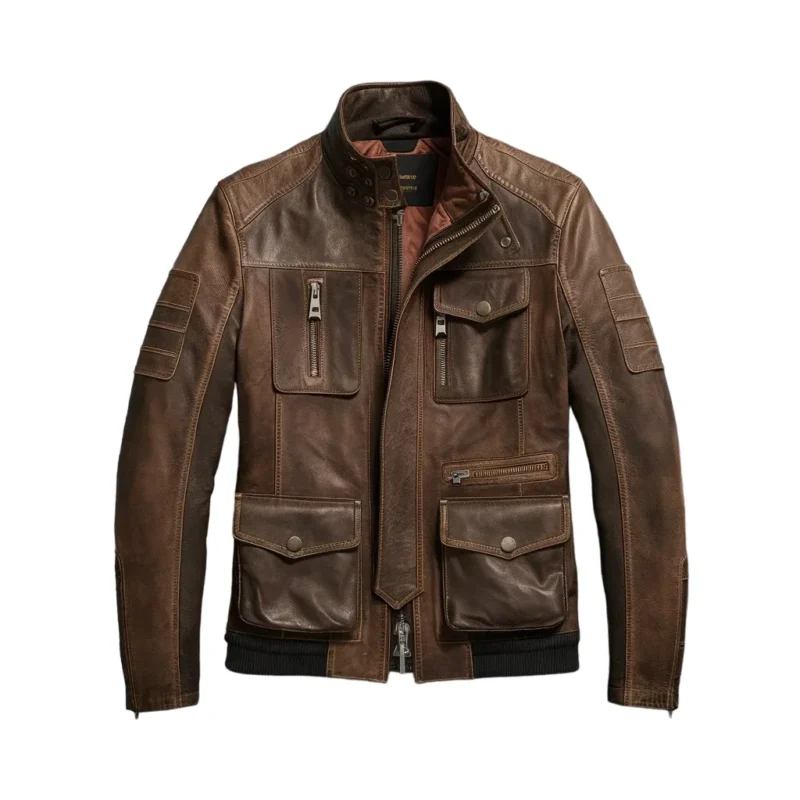
Mandarin Collar
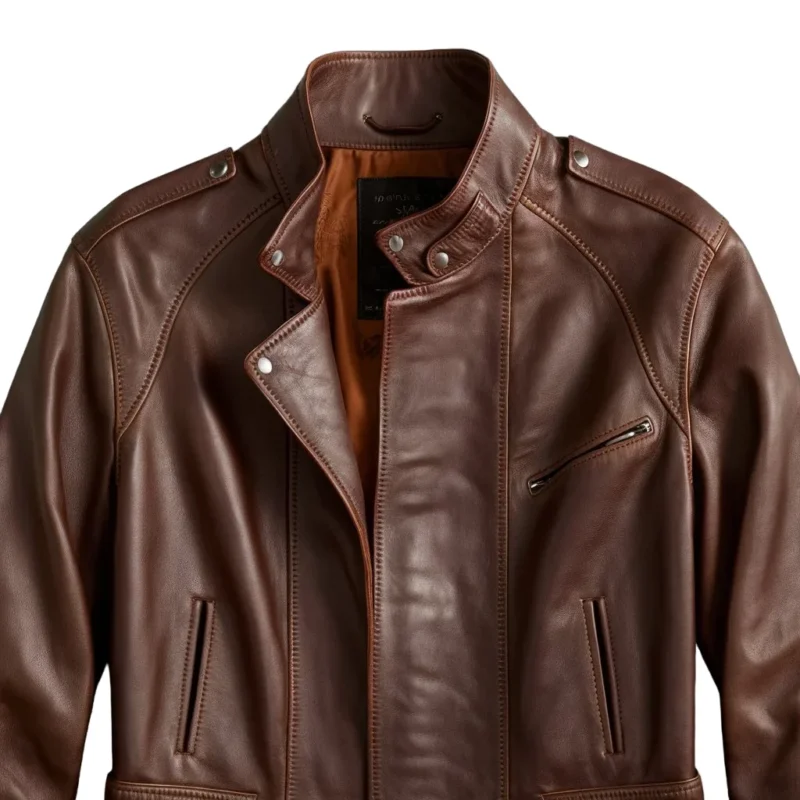
Mandarin collar, or band collar, is a short, standing-up neckline without any fold. The Mandarin collar has been inspired by traditional Chinese clothing, giving it an attractive and superior appearance. Besides, the Mandarin style enhances some classiness and superiority to your leather jacket. Giving your clothing an interesting twist that can make you unique always in looks,
Notch Collar
The Notch Collar is a collar type that is classic in every way and widely recognized. It consists of an angular cutout (notch) where the collar meets the lapel. Moreover, this collar form is commonly found on leather blazers and other more formal jacket styles. The notch collar gives it a sharp, professional look for a leather jacket, making it perfect for business casual looks or going out at night.
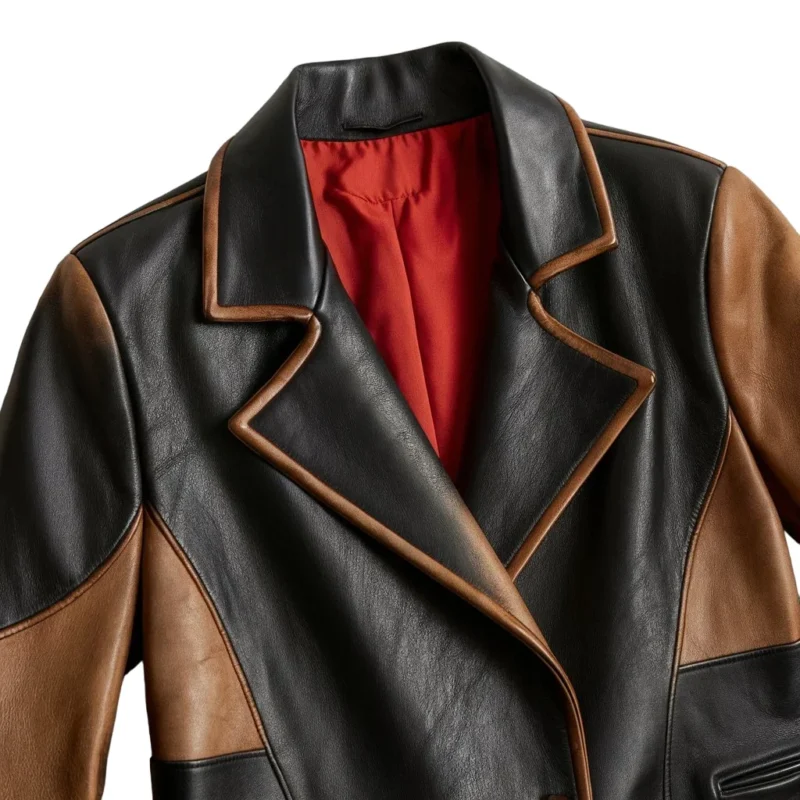
Lapel Collar
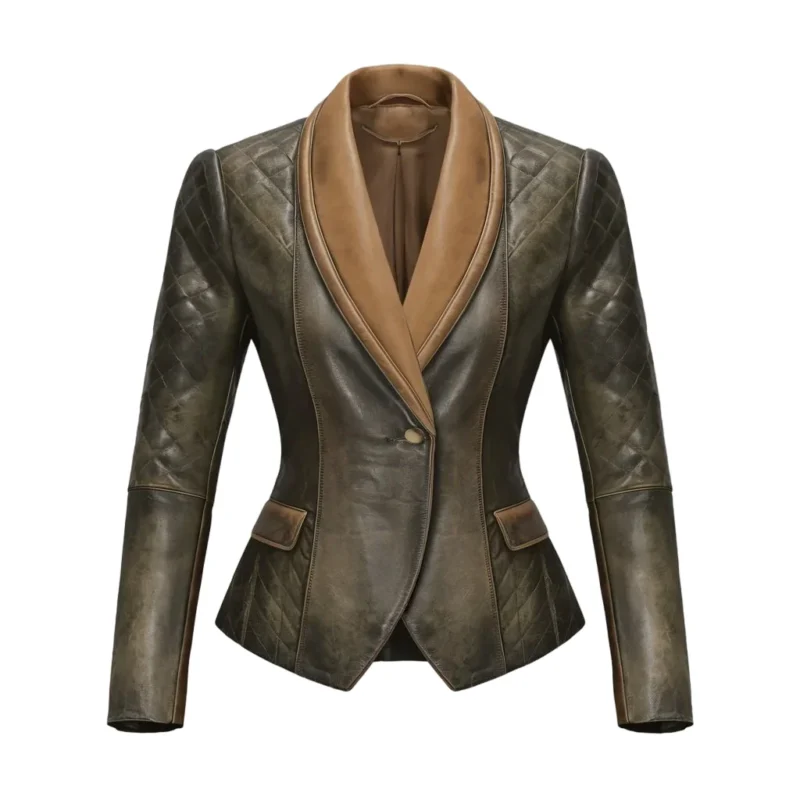
The lapel collar has a more obvious and broader lapel compared to the notch collar. Like the biker jacket, this type of collar is common on traditional leather jackets. Also, its wide lapels provide the jacket with a memorable appearance. This will be excellent if you need to enhance some swag in your clothes. The interesting thing is that these lapelled collars are great, especially for passionate fans of the iconic biker style.
Fur Collar
A fur collar makes any leather jacket feel luxurious and elegant. Generally, these collars have a detachable fur lining, which makes them outstanding at different times of the year. Also, a fur collar gives warmth and comfort to your coat, which is ideal for cold months. Moreover, it gives a feel of superiority and can make your dress or a whole outfit incredible.
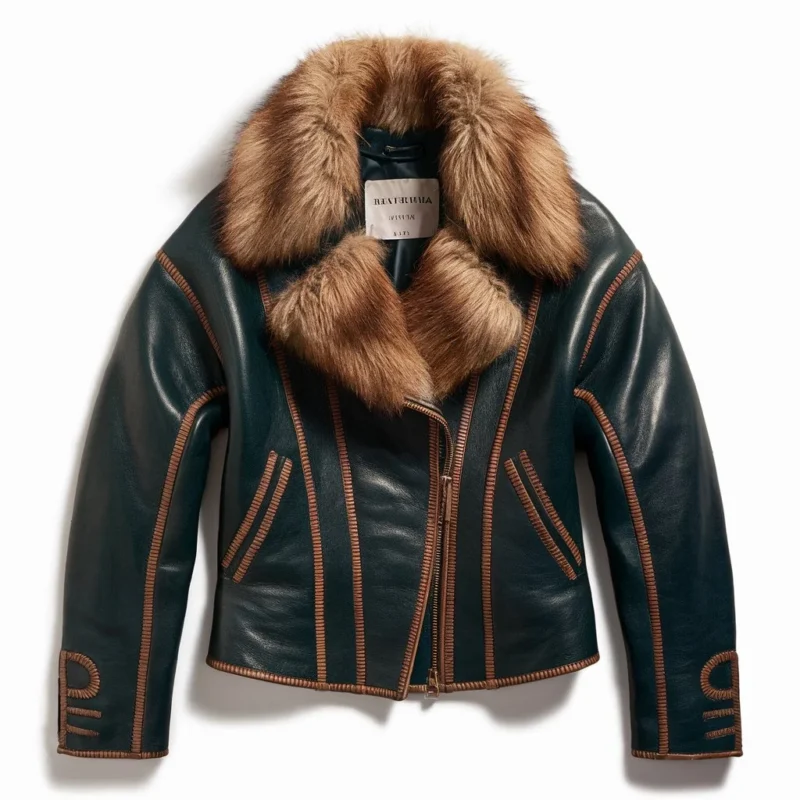
Shearling Collar
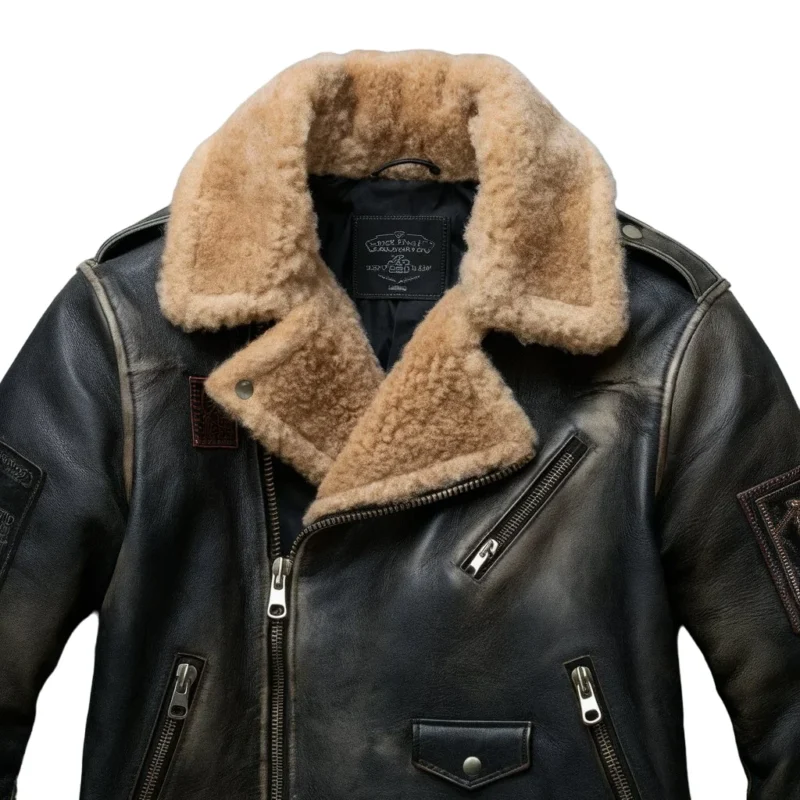
The shearling collar is similar to the fur collar in only that it is made from shearling, a form of sheepskin with attached wool. This type of collar is extremely soft and warm, which makes it perfect for winter. The shearling collar gives the leather jacket a glamorous look. Furthermore, it’s great to experience marvelous looks while the shearling gives charm to your leather jacket.
High Collar
The high collar was designed to cover more of the neck to offer extra comfort and protection. This kind of collar is commonly seen in bomber jackets and other military-influenced styles. The high collar makes the leather jacket appear extra durable and practical. Moreover, it is good for people desiring a jacket they can wear on harsh weather days while still maintaining perfection in appearance. Wearing this collar jacket can give an eye-catching look to your outfit.
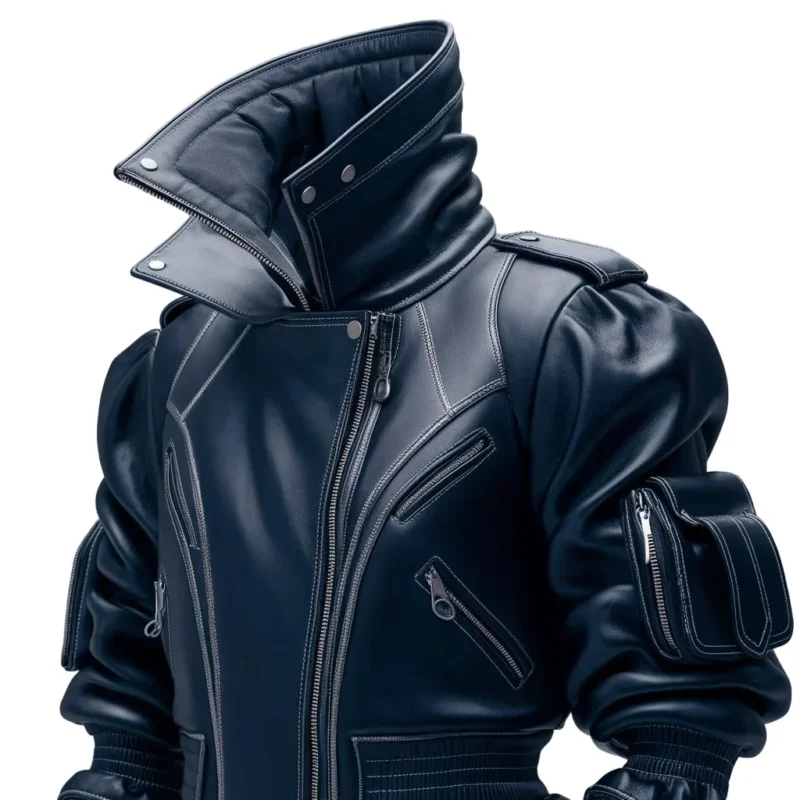
Wing Collar

The Wing Collar is an unusual type among other less common types of collars. They have little wings sticking up at their sides. Aside from this, these collars are often linked with formal attire, hence giving the leather jacket an exceptional and wonderful style. Also, a wing collar is ideal for people who would like to feel some class in their appearance; it’s a good choice for special occasions.
Fold-Over Collar
Fold-Over Collar is a simple and casual collar style. It has a soft, foldable collar that can be turned up or down depending on how you like it. This type of collar is common in casual leather jackets; hence, it can be worn any day. Apart from this, for people who don’t necessarily follow trends but prefer something simple, the Fold-Over Collar can give their jacket an easygoing appearance. This is just one way of dressing casually and comfortably.
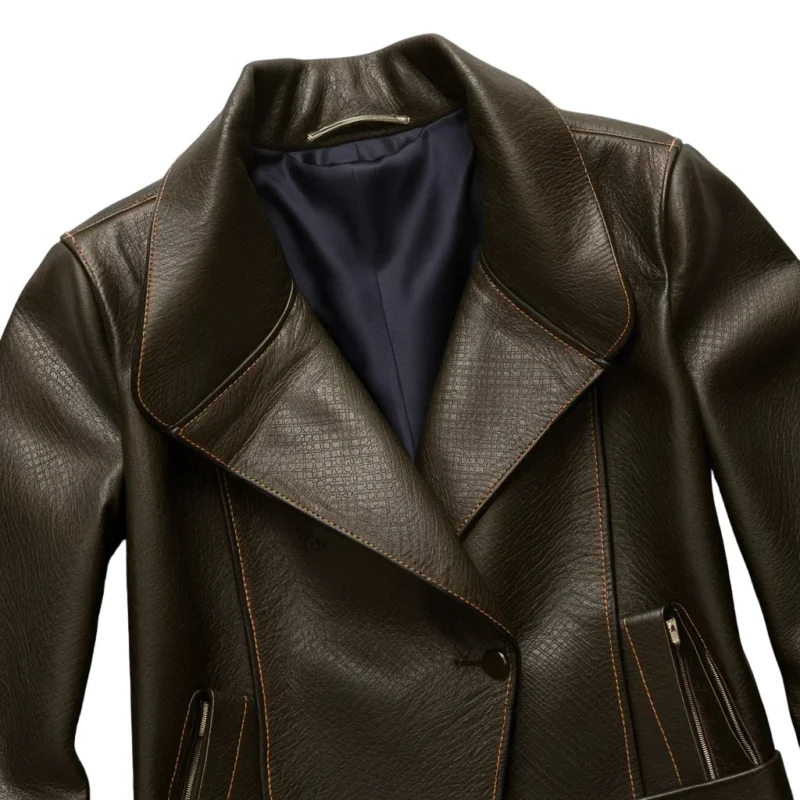
Finding The Right Leather Jacket Collar Types
Now that I’ve gone through ten different types of collars on a leather jacket, you are probably asking yourself which one suits you best. The following are tips to assist in making the right choice:
Know Your Style: Consider the overall look that you wish to create; do you prefer classic, modern, or even edgy? Different types of collars give various vibes to your biker jacket.
Consider Function: What weather conditions does this place have; how often will I wear this? You might want to pick a shearling or fur collar for extra comfort. A classic shirt collar or fold-over collar could work well if you need something you can wear with many outfits.
Make It Match Your Clothes: Also, you can pick a collar type that goes well with the clothes you already have. Go for a collar style that fits in with your current outfits.
What You Like: In the end, pick a collar type you love and feel good wearing. Your leather jacket should show who you are and make you feel sure of yourself.
To Wrap Up
Leather jacket collar types and your selective preference can change how you look. No matter if you like a classic shirt collar, a warm fur collar, or a bold lapel collar, there’s a kind for everyone. Once you know about the different collar types, you can find the perfect leather jacket that fits your taste and what you need.
So, remember that the right leather jacket with the right collar can increase your style and help you look outstanding. So take your time, look at all your options, and find the leather jacket that speaks to you. Good luck with your shopping!


I’ve been absent for some time, but now I remember why I used to love this site. Thank you, I will try and check back more often. How frequently you update your site?